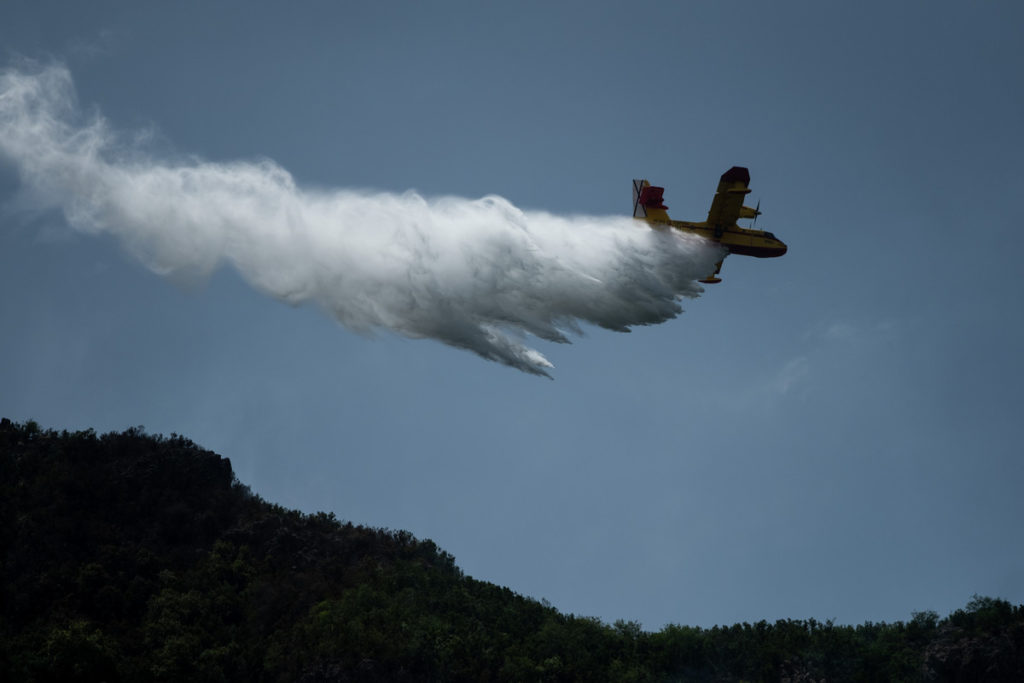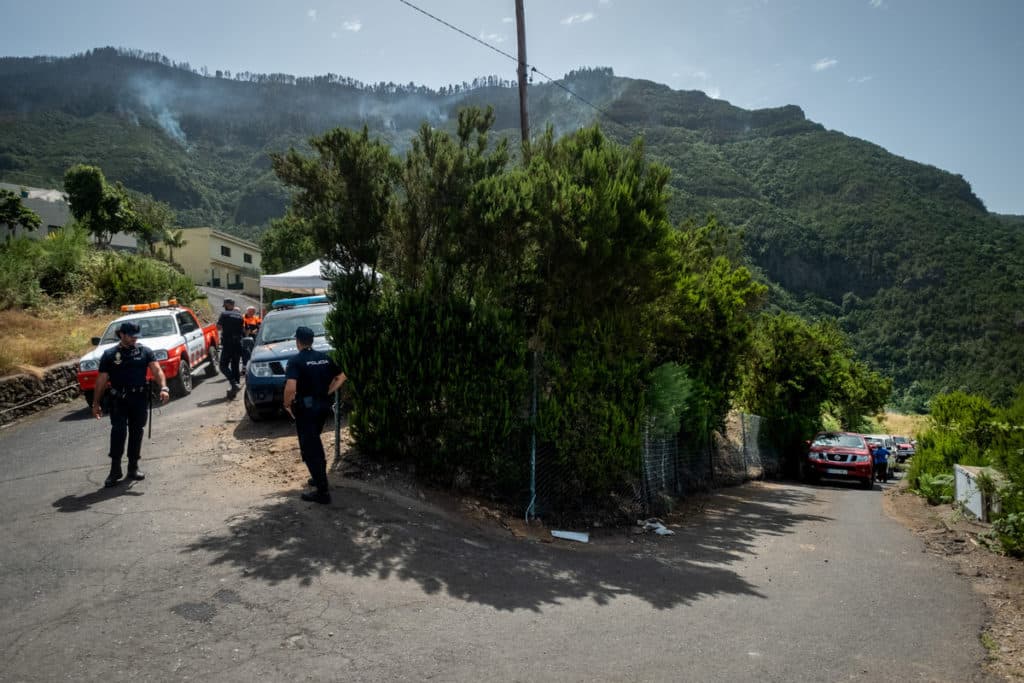The seventh day of fighting the fire in the north of Tenerife was completed, a day in which consolidated the hope to be able to bend the flames. Above all, it was a day of joy and emotion for the families evicted from the El Madroño and Los Carozos nuclei, who had yet to return to their homes, the last 40 of the initial 585 people.
The General Directorate of Security and Emergency of the Government of the Canary Islands announced the end of the evacuation in that area of Los Realejos closest to the slope of Tigaiga, the only nucleus that remained evicted due to the fire.
The families were able to return to their homes after 3:00 p.m. following the instructions of the security forces and bodies. Livestock or pet owners were able to do it with them.
The end of the evacuation occurred because the area affected by the fire in the vicinity of the limit zone of the Tigaiga hillside did not advance in the last hours, that the fire control lines were effective and also because it was not foreseen the execution of technical fire control maneuvers that may generate risk.
Some neighbors had access in a controlled manner the previous days to feed the animals, collect belongings, as well as personal documents.
The municipal operation installed in Las Llanadas and the accesses to the area communicated with the evicted to facilitate their return home from family homes or hotels, also updating the registry and enabling the necessary transport for people or animals.
One of the families that returned to their home in Los Carozos had relocated with relatives, near the Las Llanadas sports center. “We were terrible and even more so when we saw that the other neighbors had been able to return to their homes and we still had to wait. We were already uncomfortable, welcomed by the family, but we felt that we were bothering, it is not our home”.
For his part, another of the relocated neighbors acknowledged that “he went up accompanied by Civil Protection to feed the dogs, the mule and the rabbits that he had left,” while he expressed his sadness at seeing “our mountain burn, in which we have enjoyed and from which we have lived all our lives”.
There was also joy among the neighbors who were able to return to their homes days earlier. “We are back to normal, but not calm, seeing how helicopters and planes are still working. We are restless, we barely sleep at night and we are always glancing down the hillside and looking at the smoke.”
They still remember the drama of the hours of eviction. “Some were able to pick up some things, and others left with almost nothing, it was a little more complicated,” acknowledged another resident of Lomo de La Viuda.
The mayor of Los Realejos, Adolfo González, thanked the neighbors for their “collaboration and understanding” in this situation, in which they wanted to “safe people and their animals”, with municipal and Red Cross psychosocial support, guaranteeing in all cases “accommodation and maintenance”, with guarantees of transport, food and stay also for animals, with the collaboration of the College of Veterinarians, always as a preventive and safety measure and following the instructions of the Cecoes 1-1-2. And, fortunately, “without any residential home ending up being directly affected by the flames.”
Last night was calm and the fire remained stabilized at level. Throughout the day, up to 10 aerial means and another control unit continued to work on several reactivations on the slope of Tigaiga, between the areas known as El Pino llorón and up to the Risco de Miguel, the point that continues to worry the most in extinction. The weather conditions have improved a lot and a much calmer day is expected today than in previous days.
The orography is the main adversary and where the work of the aerial media is focused, attacking the hot spots until they lose intensity. In addition to the slope of the hillside, there are also areas of monteverde with deep soil, where the fire is difficult to put out. There are places that are difficult to access, which means very difficult work to build defense lines, with the danger of falling rolling stock, so work must be done very carefully and with the support of aerial resources.
Likewise, the de-escalation of the media that act in the face of the flames has already begun, yesterday maintaining 115 troops by land and 11 air media. As an example, the seaplanes carry out 20 to 22 daily unloadings with a cargo carousel in Santa Cruz every 20 minutes, and their personnel work in two shifts of four and a half hours of flight each.
The weather accompanied yesterday, especially improved in the afternoon and will be even more noticeable from today with the entry of the trade wind, which will bring humidity. This will allow the fuel to cool down and be loaded with moisture, which will be an ally for extinction.
In the next days The same strategy will be followed: consolidate the Tigaiga hillside and deal with the reactivation that occurs inside the perimeter, which still has some isolated hot spots that do not pose a risk.
de-escalation
The president of the Cabildo, Pedro Martín, pointed out that, with the decision that the neighbors closest to the hillside return to their homes, “we started a de-escalation process that, together with the weather improvement, can be maintained in the coming days.”
During the day, the TF-21 and TF-344 highways were reopened, as well as other measures. “In any case, what doesn’t change is that the fire is still out of control,” he said. In addition, he acknowledged that from today it will be possible to access the mountains of the Island. “We will allow access to the mountains in all the municipalities of the Island that are not affected by the fire, while restrictions on activities will be maintained in the area of the fire,” ad.


















